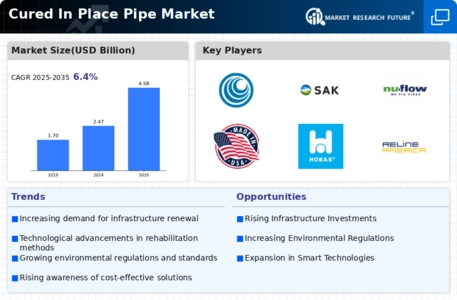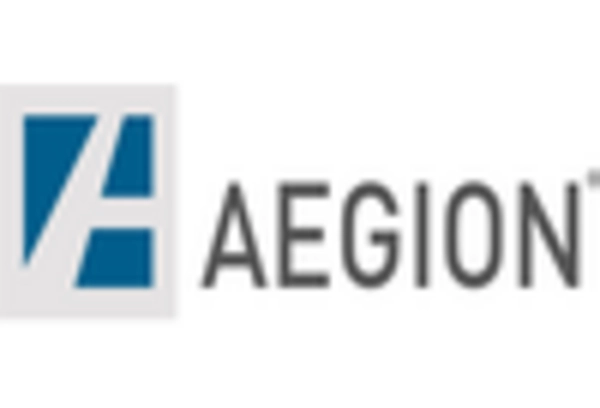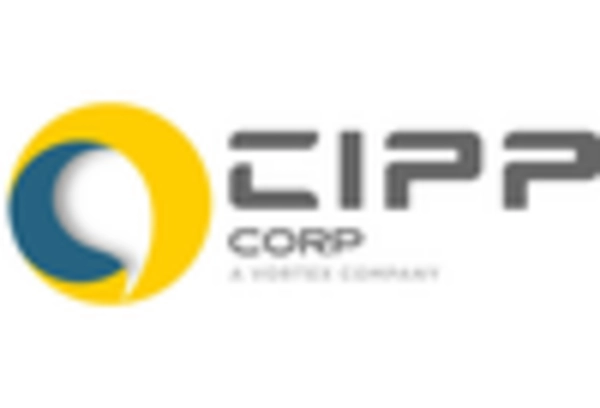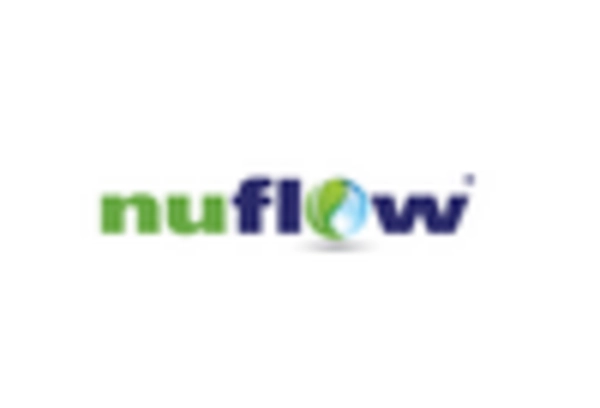Cost Efficiency
Cost efficiency remains a pivotal driver in the Cured In Place Pipe Market. The CIPP method significantly reduces the overall costs associated with pipe repair and replacement. Traditional methods often involve extensive excavation, which can lead to high labor and material costs. In contrast, CIPP allows for repairs to be conducted with minimal disruption to the surrounding environment, thereby reducing associated costs. Studies indicate that CIPP can be up to 50% less expensive than traditional methods, making it an appealing choice for municipalities and private sector clients alike. As budget constraints become more prevalent, the Cured In Place Pipe Market is likely to see increased adoption of CIPP technology as a financially viable solution for infrastructure maintenance.
Growing Urbanization
The trend of growing urbanization is a significant driver for the Cured In Place Pipe Market. As urban populations expand, the demand for reliable infrastructure, including water and sewage systems, intensifies. This urban growth often leads to increased wear and tear on existing pipelines, necessitating timely repairs and upgrades. CIPP technology offers a practical solution to address these challenges, allowing for efficient rehabilitation of aging infrastructure without the need for extensive excavation. The increasing focus on maintaining and upgrading urban infrastructure is likely to propel the Cured In Place Pipe Market forward, as municipalities seek effective methods to manage their aging pipe systems while accommodating the needs of a growing population.
Environmental Regulations
The Cured In Place Pipe Market is significantly influenced by stringent environmental regulations aimed at reducing pollution and promoting sustainable practices. Governments are increasingly mandating the use of eco-friendly materials and methods in construction and repair projects. CIPP technology aligns with these regulations, as it minimizes waste and reduces the carbon footprint associated with traditional pipe replacement methods. The ability to rehabilitate existing pipes without generating excessive debris or requiring extensive excavation makes CIPP an attractive option for compliance with environmental standards. As regulatory frameworks continue to evolve, the Cured In Place Pipe Market is likely to benefit from heightened demand for environmentally responsible solutions, potentially leading to increased market penetration and innovation.
Technological Innovations
Technological innovations are playing a crucial role in shaping the Cured In Place Pipe Market. Advances in materials science and engineering have led to the development of more durable and efficient CIPP liners. These innovations enhance the performance and longevity of repaired pipes, making CIPP a more attractive option for infrastructure projects. Additionally, the integration of smart technologies, such as sensors and monitoring systems, allows for real-time assessment of pipe conditions, further optimizing maintenance strategies. As these technologies continue to evolve, they are expected to drive growth in the Cured In Place Pipe Market, with an increasing number of projects adopting advanced CIPP solutions to improve operational efficiency and reduce long-term costs.
Infrastructure Rehabilitation Needs
The Cured In Place Pipe Market is experiencing a surge in demand due to the pressing need for infrastructure rehabilitation. Aging pipelines, particularly in urban areas, require immediate attention to prevent leaks and failures. It is estimated that a significant portion of existing pipelines is over 50 years old, leading to increased maintenance costs and environmental concerns. The Cured In Place Pipe Market (CIPP) technology offers a cost-effective solution, allowing for the repair of existing pipes without the need for extensive excavation. This method not only minimizes disruption but also extends the lifespan of the infrastructure. As municipalities and private entities prioritize infrastructure upgrades, the Cured In Place Pipe Market is poised for growth, with projections indicating a compound annual growth rate of over 10% in the coming years.


















Leave a Comment